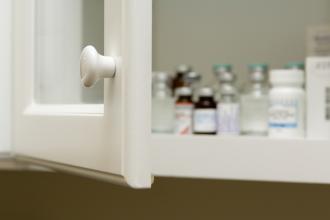Returning youth to sports: Guidance and resources during a pandemic
“So, what have you been doing to keep active during the lockdown?” I asked during our virtual health connection.
She hesitated before she replied, “Well, not too much. Maybe taking the dog out for a walk every day.”
She was a 16-year-old girl whom I was following up with for knee pain. When we last spoke in February 2020, she talked about her hectic sport schedule. She had finished a successful season of school basketball and was in the midst of transitioning to her club volleyball season. She was used to near daily training sessions and games. She was one of the 39% of Canadian youth who were likely meeting the physical activity recommendations in the 24-hour movement guidelines for children and youth (> 60 min per day).[1] Now she was struggling to keep active.
With almost all youth sports shut down during the pandemic’s peak, it is not surprising that these stories are common. Some youth have tried to take advantage of the less rigorous structure of online classes by going outside more often. Others, despite the best efforts of Provincial Health Officer Dr Bonnie Henry to encourage outdoor activities,[2] have been reluctant to leave their homes due to their own or their parents’ fears.
The impacts of prolonged inactivity are multifactorial. Studies of bedrest have shown a progression of muscle atrophy, starting after only a few days. Inactivity will also affect the neuromuscular junction and reduce aerobic capacity.[3] Additionally, there is an impact on an individual’s mental health, particularly for those who have tied much of their self-identity to team and sports participation.
How can physicians support youth to keep active and prepare a plan for a safe return to sports?
A good starting point is simply to ask about the physical activities they have (or have not) been able to enjoy lately. Exploring, together, actual and perceived barriers to physical activity is useful.
“Well, at least my knees don’t seem to hurt anymore,” she explained.
Unsurprisingly, several overuse injuries might settle down with a period of rest. However, some patients have a fear of pain returning with physical activity. Taking the time to prepare for re-entry into sporting activities might include addressing previous issues using physiotherapy or other appropriate interventions.
It is also a useful time to think about injury prevention. Different sports have varying evidence for injury prevention strategies, including neuromuscular training exercises. These could be done as part of preparing to return. Patients and families can be referred to BC’s Active & Safe Central website (www.activesafe.ca), which summarizes prevention evidence and strategies for over 50 sports.
Preparation for a return to sport should also include restarting cardiovascular training. Encourage children and youth to safely go outside for a run, bike ride, or even a brisk walk. Strength training also needs to be part of the preparations and can be accomplished at home without any equipment using one’s own body weight. High repetition counts, done slowly, will help build back strength lost during inactivity.[4]
In BC, viaSport has been given the mandate to help coordinate sport-specific guidelines for returning local sport organizations.[5] Each sport will have developed its own safety plan that includes risk assessment and mitigation, facility and environmental modifications, and adapting physical and social interactions. A phased approach has been adopted. Transition measures allow for training, while limiting most sport contact and competition. Eventually, this will loosen to allow for small group contacts and possibly regional games.
It’s important to remind youth that, as with the resumption of other activities, a return to sport requires participants to take personal responsibility in reporting any COVID-19 symptoms or exposures they may have had. This will help limit exposure of teammates and staff.
By reviewing a plan for return to sport, we can get kids who were active before the pandemic to stay active. Additionally, we can use this opportunity to remind inactive youth to consider getting involved now, as the focus is on training and skills development rather than competition.
—Tommy Gerschman, MD, FRCPC, MSc
hidden
This article is the opinion of the Athletics and Recreation Committee, a subcommittee of Doctors of BC’s Council on Health Promotion, and is not necessarily the opinion of Doctors of BC. This article has not been peer reviewed by the BCMJ Editorial Board.
References
1. ParticipACTION. 2020 ParticipACTION report card on physical activity for children and youth. Accessed 12 July 2020. https://participaction.cdn.prismic.io/participaction/f6854240-ef7c-448c-ae5c-5634c41a0170_2020_Report_Card_Children_and_Youth_Full_Report.pdf.
2. BC Gov News. Stay safe by staying home over the long weekend. 9 April 2020. Accessed 12 July 2020. https://news.gov.bc.ca/releases/2020PSSG0019-000671.
3. Narici M, De Vito G, Franchi M, et al. Impact of sedentarism due to the COVID-19 home confinement on neuromuscular, cardiovascular and metabolic health: Physiological and pathophysiological implications and recommendations for physical and nutritional countermeasures. Eur J Sport Sci 2020:1-22.
4. Hammami A, Harrabi B, Mohr M, Krustrup P. Physical activity and coronavirus disease 2019 (COVID-19): Specific recommendations for home-based physical training. Managing Sport and Leisure 2020:1-6.
5. viaSport. Return to sport. Guidelines for BC. Revised 25 June 2020. Accessed 12 July 2020. www.viasport.ca/sites/default/files/ReturntoSportGuidelines.pdf.

